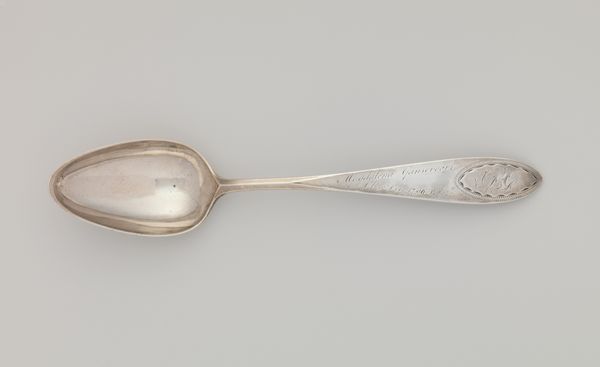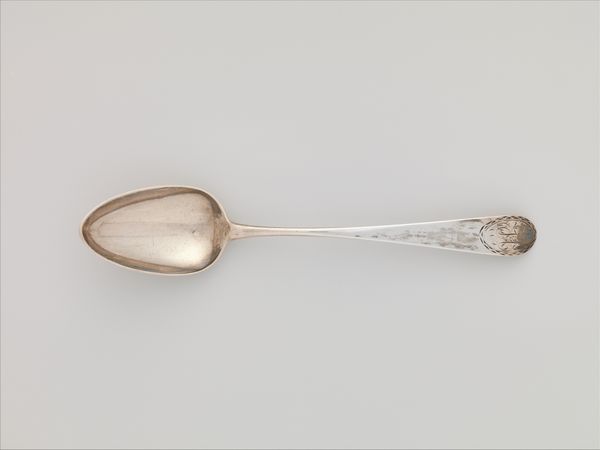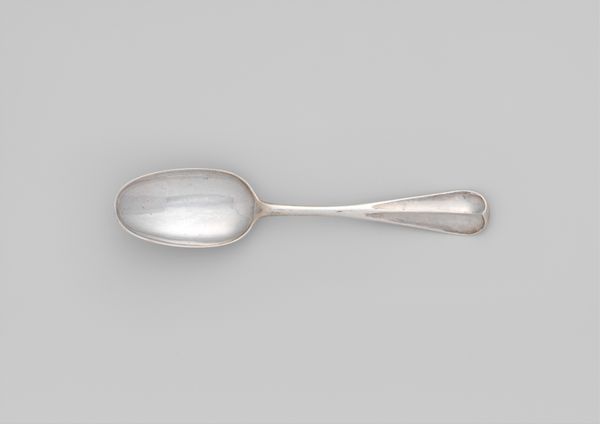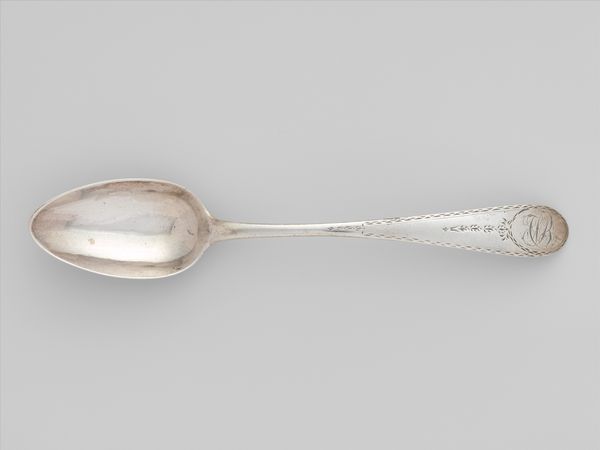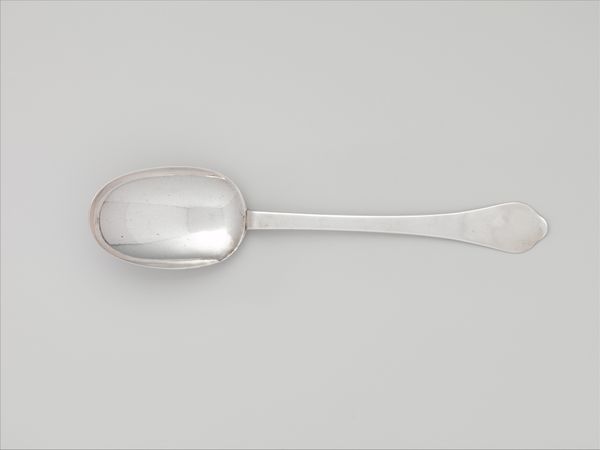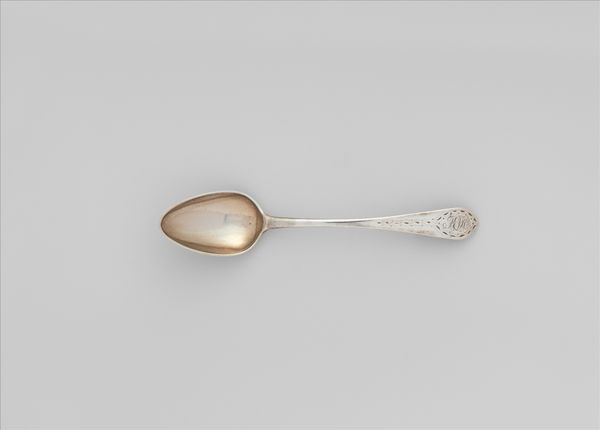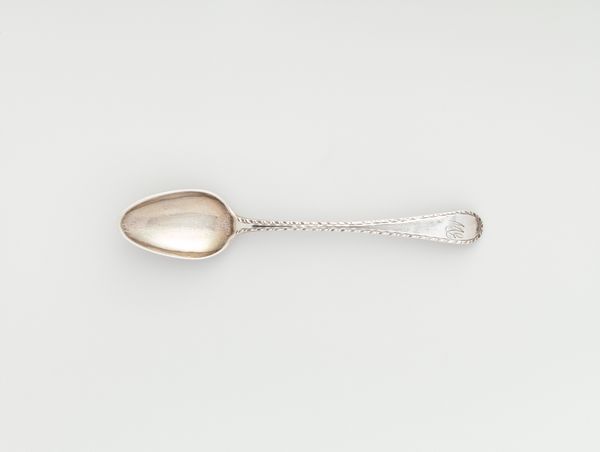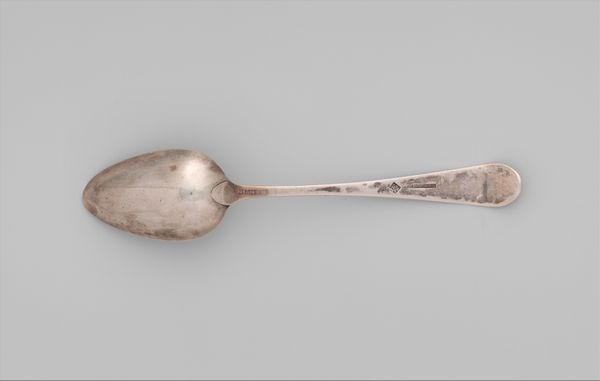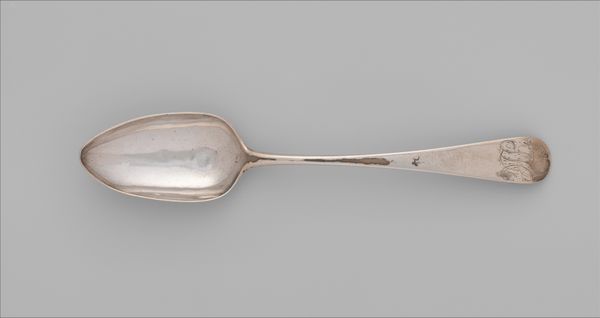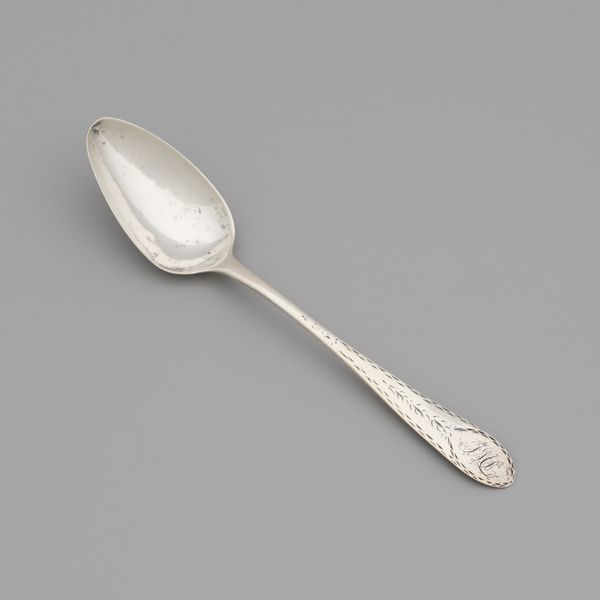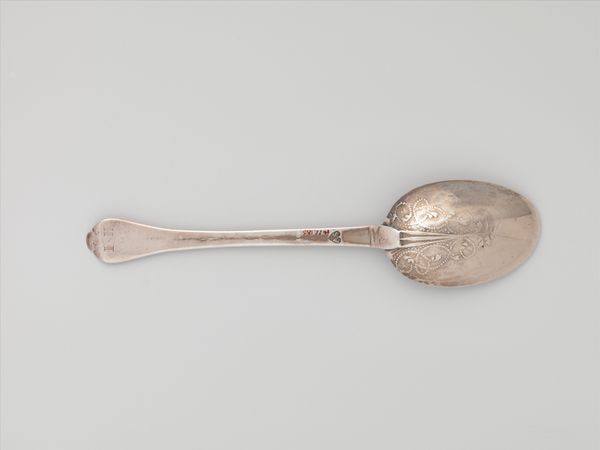
silver, metal
#
silver
#
metal
#
decorative-art
Dimensions: L. 5 1/2 in. (14 cm)
Copyright: Public Domain
Editor: Here we have a silver teaspoon, made by Christian Wiltberger, sometime between 1770 and 1800. It feels very unassuming, almost ordinary. I wonder what its story might be. How would you interpret this seemingly simple object? Curator: Well, it's precisely that ordinariness that's interesting. Everyday objects like this spoon offer unique insights into the lives of people in the past. Consider the socio-political context. Who owned this spoon? Was it a signifier of status in a burgeoning republic, still wrestling with the legacy of class divisions? Editor: That's fascinating, I hadn't thought of it that way. So the spoon becomes more than just a utensil, but a symbol of social identity? Curator: Exactly! Silverware in the late 18th century was an investment, a display of wealth and refinement, carefully curated for public consumption. Also, notice the initials engraved on the handle. Who was that person, and what was their place in society? What stories could this spoon tell us about them, and about the rituals of dining and hospitality during that era? Editor: It's incredible how much history can be embedded in a single teaspoon. Curator: Precisely. Museums aren’t just repositories of art; they’re stages where objects perform, revealing the complex interplay between material culture and social power. Looking closer transforms a mundane object into a lens through which to view the past. Editor: I’ll definitely think differently about silverware now! I understand how such a seemingly basic item connects with so many layers of societal context. Curator: Absolutely. Each object holds a multitude of narratives waiting to be uncovered.
Comments
No comments
Be the first to comment and join the conversation on the ultimate creative platform.
